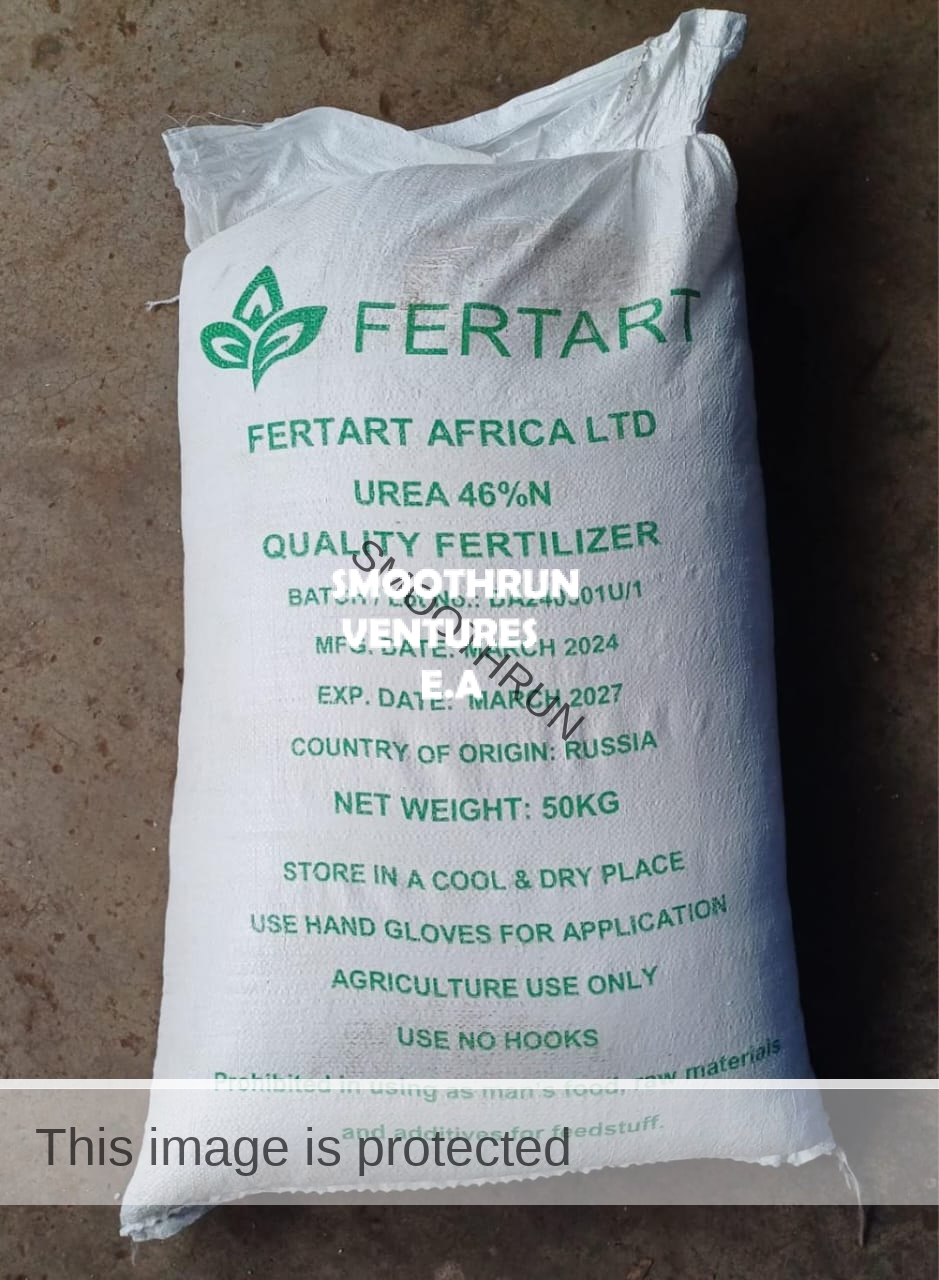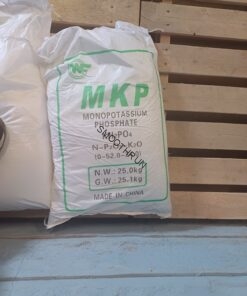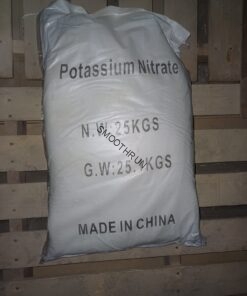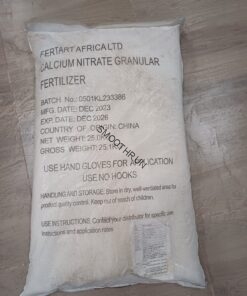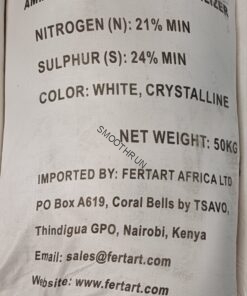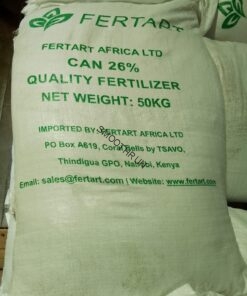UREA
KSh4,800.00 + VAT
UREA is the most important nitrogenous fertilizer used in crops and doubles up as a cattle feed supplement. it provides high quantity of nitrogen to plants.
Urea has the highest nitrogen content of all solid nitrogenous fertilizers in common use. More than 90% of world industrial production of urea is destined for use as a nitrogen-release fertilizer. Urea is made up of 46% nitrogen and is more widely available
Urea is an extremely mobile substance in soils because of its negative charge and is a major cause of water pollution from agriculture. It is readily absorbed by plants, and is the dominant source of nitrogen for plant growth. Urea is used in many multi-component solid fertilizer formulations and is highly soluble in water.
Urea is usually spread at rates of between 40 and 300 kg/ha but rates vary. Urea is not compatible with other fertilizers. In irrigated crops, urea can be applied dry to the soil, or dissolved and applied through the irrigation water. As the N rate increases the percentage of NH3 loss from urea increases. Urea is susceptible to ammonia (NH3) loss during its conversion to ammonium-N.
ADVANTAGES OF UREA
. High Nitrogen Content: Urea’s high nitrogen content is one of its main benefits as a fertilizer. An essential ingredient for plant development, nitrogen is also necessary for the synthesis of enzymes, proteins, and chlorophyll. Nitrogen is a necessary ingredient that plants may effectively get via urea, which normally includes 46% of this element.
. Cost-Effective: Farmers benefit economically from urea since it is comparatively less expensive than alternative nitrogen fertilizers. Because of its cost, large-scale agricultural businesses find it to be an appealing alternative since it allows farmers to increase crop yields without having to spend exorbitant amounts of money.
. Versatility: A wide range of crops, including cereals, oilseeds, vegetables, and fruits, may benefit from the use of urea fertilizer. Due to its versatility in growing a variety of crops, farmers using a range of cultivation techniques often choose it.
. Effective Release of Nitrogen: The soil converts urea in two stages, with the help of the urease enzyme. Urea is changed into ammonium and then nitrate by this process. The danger of nitrogen loss by volatilization is decreased by this two-step breakdown, which releases nitrogen in a more regulated and prolonged manner.
. Diminished Environmental Impact: One way to lessen pollution in the environment is by the carefully managed release of nitrogen from urea. Urea helps stop the polluting of groundwater and the release of greenhouse gases like nitrous oxide by reducing nitrogen leaching and volatilization
Better Soil Structure: By encouraging plant development, urea may help indirectly improve soil structure. When crops are given enough nitrogen to grow, their root systems help aggregate the soil, which reduces erosion and improves soil health in general.
. Compatibility with Other Fertilizers: Farmers may simply combine urea with other fertilizers to produce unique mixes that are suited to the unique requirements of their crops. This compatibility guarantees a well-balanced fertilization approach and improves the effectiveness of nutrient delivery to plants.
. Long Shelf Life: When kept properly, urea has a long shelf life. Because of its stability, farmers can buy and store urea in large quantities without worrying about it degrading quickly or losing nutrients. This makes it a handy alternative.
. Enhanced Crop Yield and Quality: Higher crop yields and better crop quality are a result of the urea’s steady and dependable nitrogen delivery. During the vegetative growth stage, nitrogen is very important, and urea is an excellent source of this nutrient that supports the healthy development of plants.


